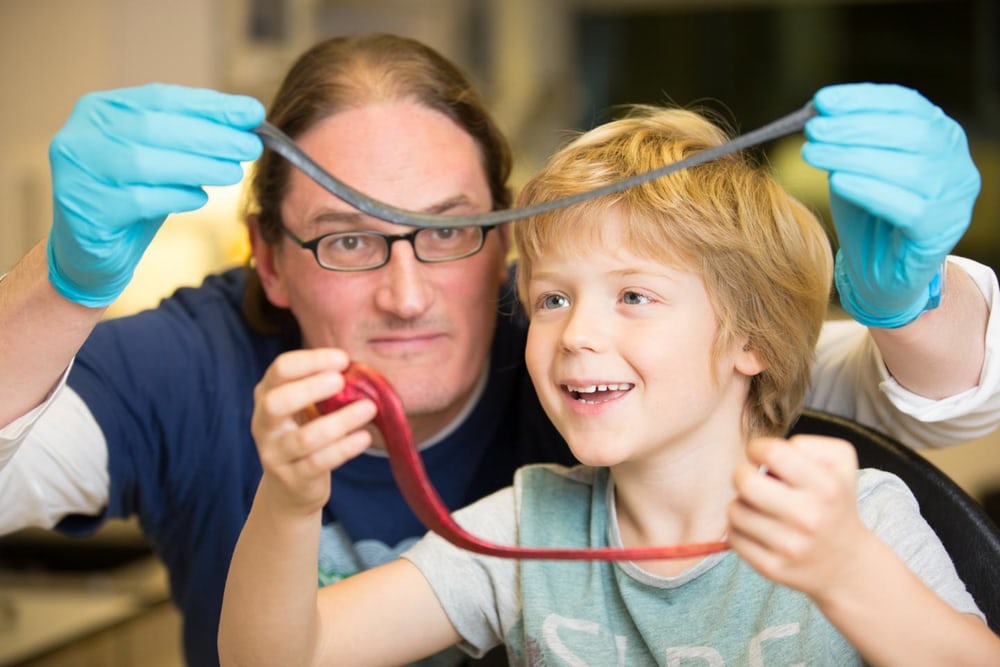Silly Putty may no longer be silly, at least according to researchers at Trinity College Dublin. After adding graphene flakes to the novelty toy, the team discovered that it works as a pressure sensor that can monitor blood pressure, among other things. Who would have thought? Not my nine-year-old self.
Graphene, which consists of carbon atoms linked together to form a one-atom-thick sheet, could be described as a wonder material. It’s highly electrically conductive, chemically stable, and is incredibly strong. Silly Putty is a gooey old-school children’s toy, or so we thought.

Lead scientist Jonathan Coleman and his son Oisin with G-putty and regular Silly Putty. Image source: AMBER, Trinity College Dublin.
In collaboration with Professor Robert Young of the University of Manchester, an AMBER team (meaning an Irish materials research center hosted by Trinity College Dublin) led by Professor Jonathan Coleman added a small amount of graphene flakes to some Silly Putty. The resulting material, dubbed as G-putty, is electrically conductive.
To make the new material, polydimethylsiloxane (PDMS) was heated with boric acid, which linked the oil’s polymer chains together to form a putty. Then graphene flakes were made from graphite using liquid phase exfoliation, which left graphene suspended in solvent. Lastly, the two components were mixed and the solvent boiled off to leave a graphene-infused putty.
Electrical resistance tests revealed that G-putty was highly sensitive to the slightest deformation or impact — at least 10 times more sensitive than other nanocomposite sensors. In one study, a sheet of cling film coated with G-putty detected the individual footsteps of a small spider — weighing just 20 mg — scurrying over the surface.
If that’s not impressive enough, when the material was placed against the chest or neck of test subjects, it was able to measure breathing, pulse, and blood pressure. Other experiments showed G-putty sensing joint motions, such as finger-wagging.
According to the research team, G-putty is hundreds of times more sensitive than traditional sensors used in applications such as medical devices. This unique discovery can open up major possibilities in sensor manufacturing all over the world.
So, point proven. Play is the highest form of research.
This study was originally published in the journal Science .
Advertisement
Learn more about Electronic Products Magazine





